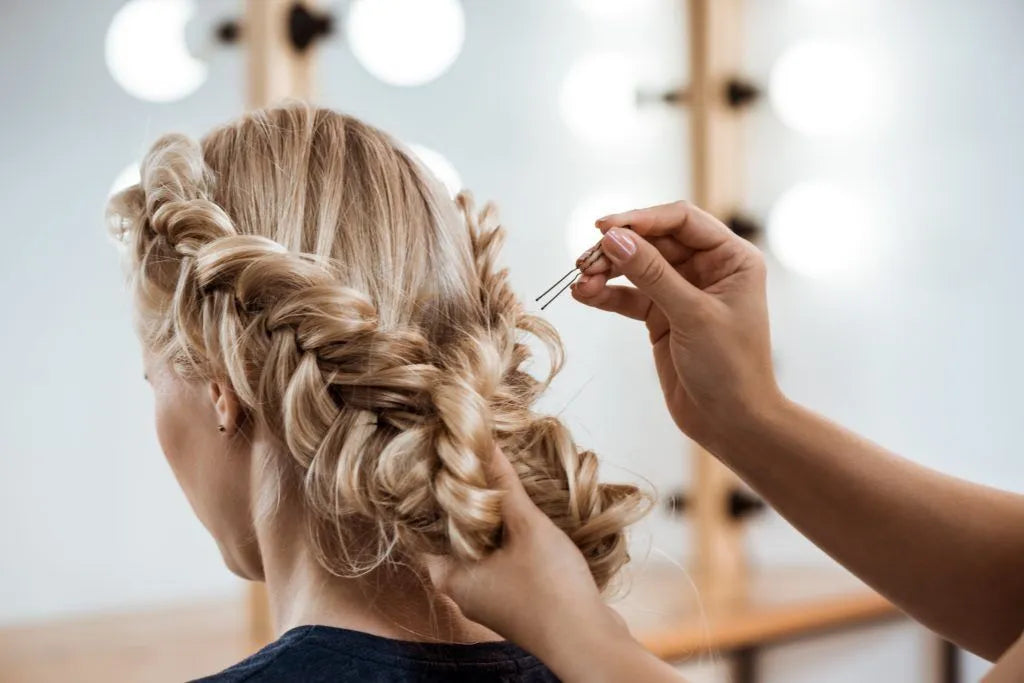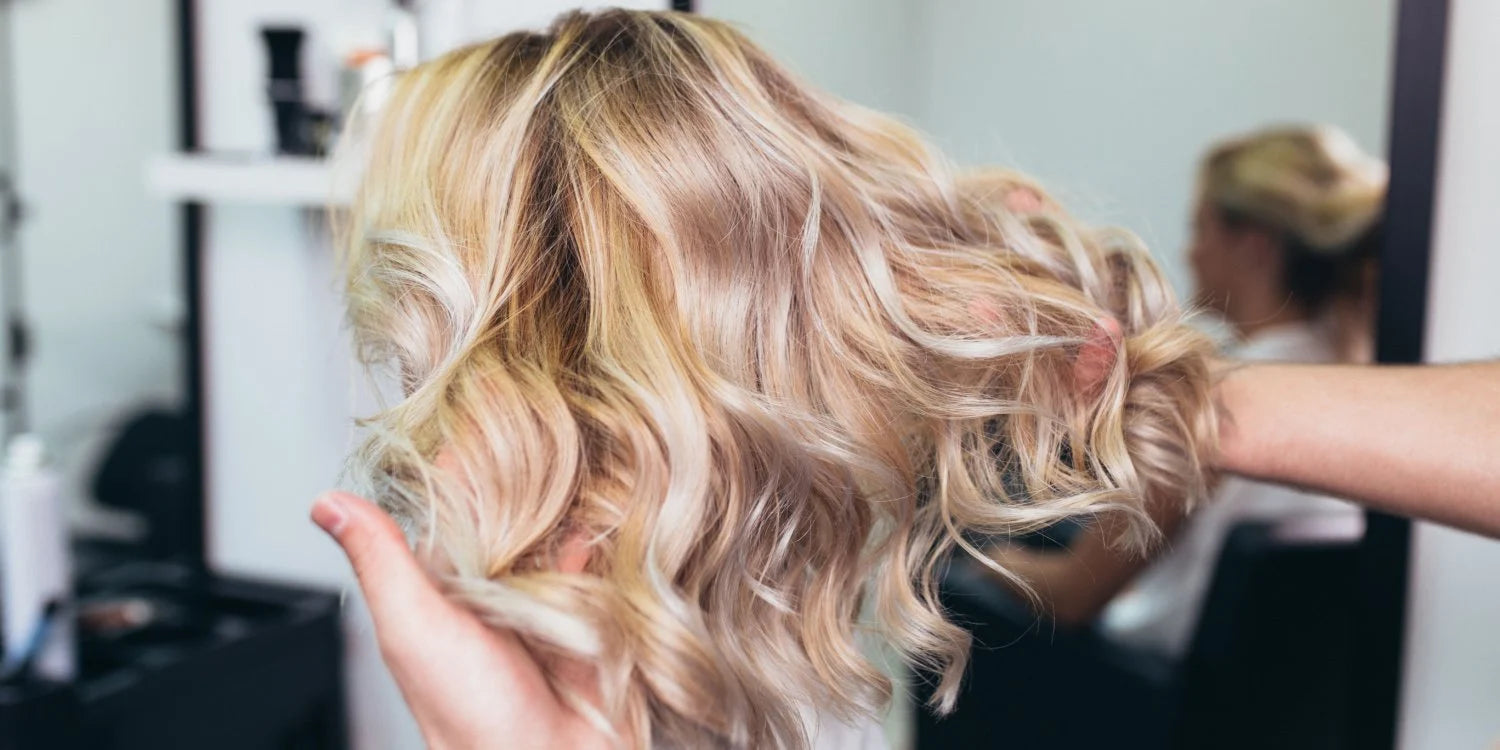To choose a wig perfect for you, it's important to measure your head for the right wig cap size. A well-fitting wig cap not only ensures comfort but also boosts your confidence by looking as natural as possible. Whether you're a first-time wig buyer or looking to perfect your wig-wearing experience, this guide will walk you through the essential steps to determine your ideal wig cap size.
Preparation for measuring your head for a wig
To measure your head accurately for the wig cap size, you will need the tools below and get your hair prepared. This initial stage sets the foundation for obtaining measurements that will ensure a comfortable, well-fitting wig that looks natural when worn.
What you need to measure your head size
-
Flexible Measuring Tape: This is crucial for obtaining accurate measurements of your head. Unlike rigid rulers, a flexible tape can contour to your head's shape, ensuring that your measurements are precise.
-
Mirror: Having a mirror allows you to see what you're doing, especially when measuring areas like the back of your head or over the crown. This helps in maintaining the correct positioning of the tape measure.
-
Pen and Paper: It’s vital to record each measurement right after you take it. Measurements can be easily forgotten if not written down immediately, especially since you’ll be taking several different types.
Preparing your hair
How you prepare your hair can greatly influence the fit and appearance of your wig. If your hair is not styled correctly under the wig, it can cause bulges or irregularities in how the wig sits and looks. Here are some steps to prepare your hair effectively:
-
Flatten Your Hair: To get the most accurate wig fit, your hair should be as flat as possible against your scalp. This can be achieved through various methods depending on your hair type and length.
-
Replicate Wig Conditions: If you intend to wear a wig cap under your wig (which is recommended for protecting your natural hair and ensuring a smooth surface), wear it while measuring.
Taking the time to prepare for the measurement ensures an accurate result, ultimately allowing you to choose a wig that fits perfectly, looks great, and feels comfortable throughout the day. This preparation phase, although it might seem tedious, is a critical step that enhances the overall satisfaction with your wig purchase.
How to measure your head for a wig
Confirming the correct wig cap size is essential for comfort and a natural appearance when wearing a wig. A well-fitting wig cap helps keep the wig securely in place and prevents discomfort or headaches from a too-tight fit. Moreover, a wig that fits properly will appear more natural and blend seamlessly with your natural hairline, improving the overall look. Let's dive into this step-by-step guide to finding your perfect wig cap size!

Step 1: Measuring the circumference
To measure the circumference of your head, you need a flexible measuring tape. Begin at the front of your hairline and wrap the tape around the back of your head, ensuring it passes just above your ears and under the occipital bone (the bump at the back of your head). Keep the tape level and snug, but not tight. Record this measurement as it is the primary reference for most wig sizes.
Step 2: Measuring front to back
To measure your head size from front to back for a wig, position the start of a measuring tape at the center of your front hairline. Stretch the tape over the top of your head and down to the nape of your neck, following the natural curve of your skull. Ensure the tape stays flat against your head for an accurate measurement. This will help you find a wig that fits well and looks natural.
Step 3: Measuring ear to ear over the crown
For this measurement, position the tape at your hairline just above one ear. Extend the tape over the crown of your head (the highest part) to the same point just above the other ear. This helps determine the width of the wig cap that will sit comfortably over the top portion of your head.
Step 4: Measuring ear to ear over the front
Start with the tape at your temple, just in front of your ear, bring it across the forehead at the hairline, and go to the same point in front of the opposite ear. This measurement is essential for ensuring that the front of the wig frames your face correctly without being too tight or too loose.
Step 5: Measuring temple to temple over the back
Connect your measuring tape from one temple to the other, passing over the back of your head. This measurement helps in fitting the wig more naturally around the breadth of your head, allowing for a uniform distribution of the wig cap.
Step 6: Measuring the nape of the neck
To ensure a precise fit for a wig around the lower part of your skull, measure the width of your neck at the nape. It's kind of easier than the previous steps. Position the measuring tape at one side of the nape and wrap it around to the opposite side, keeping it close to where the skull connects with the neck. This measurement is vital for wigs that overlap onto the neck area, helping to prevent them from riding up or causing discomfort.
How to find the right wig cap size
Using your recorded measurements to find the right wig cap size involves matching them against standard wig size charts. Here’s how to interpret your measurements:
-
Consult Size Charts: Nearly every wig manufacturer provide a size chart, which typically includes categories like petite, average, and large. Compare your circumference measurement as a primary guide—this is usually the most critical measurement for cap fitting.
-
Understand the Range of Wig Cap Sizes
Ultra Petite: Generally for children, these sizes range from 18.5 to 19.5 inches (46.9 to 49.5 cm).
Petite: Suitable for head circumferences between 20.5 and 21.5 inches (52 to 54.6 cm).
Average: The most common size, typically ranging from 21.5 to 22.5 inches (54.6 to 57.2 cm).
Large: Designed for those with a head circumference of 22.5 inches or larger (57.2 cm and above).

-
Account for Other Measurements: While circumference is key, other measurements like ear to ear over the crown and front to back are important for ensuring the wig does not feel tight or loose in specific areas. These measurements can influence the depth and width of the cap, affecting how the wig sits on your head.
-
Seek Advice if Unsure: If your measurements fall between sizes or you find discrepancies in fitting based on different brands' size charts, don't hesitate to contact the wig supplier for advice. They can offer guidance based on their specific products.
Mistakes to avoid when measuring for the correct wig cap size
When measuring your head for a wig, precision is key. Small inaccuracies can result in a fit that is uncomfortable or looks unnatural. Here are some common mistakes to steer clear of.
1. Measuring too tight or too loose
Maintaining a balanced tension while measuring is vital. Here's why and how to achieve it:
-
Importance of Correct Tension: A tape that is pulled too tight will yield a measurement that could result in a wig that's uncomfortably snug, potentially leading to headaches and a compressed look. Conversely, a tape that’s too loose could result in a wig that slips or moves, undermining security and style.
-
Achieving Balanced Tension: Hold the measuring tape firmly against your head without digging into your skin. It should be snug but not constricting. You should be able to fit a finger snugly under the tape without too much extra space.
2. Misplacing the measuring tape
It's important to place the measuring tape properly.
-
Front Hairline: Start the tape at your front hairline for measurements that wrap around the head or go over the top. This is typically just above your forehead and may vary slightly based on individual hair growth patterns.
-
Nape of the Neck: When measuring for the nape, ensure the tape runs across the lowest part of your hairline at the back of your neck. This is crucial for wigs that extend into the neck area.
-
Over the Crown and Ears: For measurements like ear-to-ear over the crown, ensure the tape passes evenly over the highest part of your head. When measuring ear-to-ear across the front, ensure the tape touches down just at the point where the top of your ear connects to your head.
-
Using Mirrors: Use a dual-mirror setup (a large mirror in front and a hand-held mirror) to check the tape’s position from all angles. This is particularly useful for ensuring that the tape hasn’t twisted or slipped from its intended path.
Avoiding these common measuring mistakes will help you obtain the most accurate readings possible, which is fundamental for selecting a wig that fits perfectly. Accurate measurements contribute significantly to the comfort and aesthetic appeal of your wig, enhancing your overall experience and satisfaction.
Wrapping up
Accurate measurement is crucial for securing an optimal wig fit that is comfortable and looks natural. Just taking your time during this process. It can prevent errors and ensure that the wig cap size you choose fits your head perfectly. Patience and precision in following these steps are key to enjoying the full benefits of a well-fitted wig. Always double-check your measurements and consult with wig specialists if you have any doubts, to ensure the best possible outcome.




Leave a comment
All comments are moderated before being published.
This site is protected by reCAPTCHA and the Google Privacy Policy and Terms of Service apply.